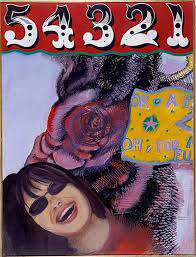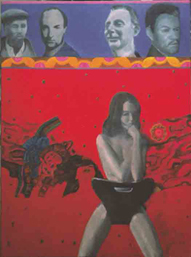Autumn: A Novel
by Ali Smith
West Maui Book Club Discussion Questions
Aloha and mahalo for visiting our site! Please feel free to use our DQ's online or off but with attribution.
WMBC page numbers refer to iBooks edition.
*********
1. The novel’s title is one of a quartet of proposed seasonal titles. However, the word “autumn” within the story holds many meanings. Discuss the ways it refers to the season, the lives of its characters, in particular to Daniel Gluck, his sister, and song “Summer Brother, Autumn Sister” (pgs. 235-236) Also and especially with the chapter beginning with “Autumn. 1963. Scandal 63” (pgs. 241-252) that relates to the 1963 Profumo scandal, a litigated affair between John Profumo (British Secretary of War), Christine Wheeler (an alleged prostitute), and Yevgeny “Eugene” Ivanov (a Soviet naval attaché) from the involvement of Dr. Stephen Ward (a society osteopath and part-time portraitist) who was also later tried in court.
2. There are several chapters written similar to the first chapter as either highly imaginative dreams or seemingly-but-not-unrelated inserts. How did they help set the tone and characterization of the story for you?
3. The same goes for the many humorous “bagatelle-type” conversations, especially those between Elisabeth and Daniel Gluck. Another was with the Post Office worker (pgs. 24-27) where her head is the wrong size in her passport photo and she asks, “If this were a drama on TV, you know what would happen now?” Following that, it then segues into her being innocent yet accused of some wrongdoing. “Power of suggestion, he says. Suggestion of power, she says.” “This isn’t fiction, the man says. This is the PO.” Elisabeth watches him go through the swing door at the back. She pushes her way through the self-service queue and out the non-fictional post office.
4. How were Elisabeth and Daniel very much alike? How were they different?
5. Why do you think Daniel would dream of the Sacramento Mountains when he and Elisabeth live in the UK and the mountains are never mentioned again?
6. Elisabeth is given the assignment to talk to a neighbor about what it means to be a neighbor (pg. 43) and then to portray it in writing. Were you happy with her finished piece? (pg. 231). Why do you think the author used the word "portray?" Also, if Elisabeth were to ask you what it means to be a neighbor, what would you say?
7. What do you think of Elisabeth’s mother bribing her daughter to fake the assignment (pgs. 46-48) and then embarrassing her by showing it to Daniel Gluck without her permission?
8. In the “seemingly-but-not-unrelated” chapter about a movie filming in Nice, France in 2015, the now adult Hannah Gluck's name is finally mentioned. (pgs. 63-66) Why do you think the author left it out of the book until then and never returns to it? Is the reader meant to forget her name too, like Daniel does in his dreams? Also in his dreams (pgs. 181-193), the author writes "forever 21." (pg. 189). Do you think this reference is to Hannah or to a 21-year-old Pauline Boty with whom Daniel loved?
9. The author weaves Brexit and its resulting UK immigrations conflict into the novel. Note: exit day to be Mar. 29, 2019, currently there are 28 primarily European countries involved, with London being the largest populist city.
10. The author also expertly weaves Pauline Boty’s life and portraits into the story. Did you know anything about her prior to reading this novel? If not, what did you learn about her? Note: Pauline Boty was founder of the British Pop art movement and the only female painter in the British wing of the movement. Mar. 6, 1938 - July 1, 1966.
11. Discuss the significance of Boty’s painting titled 54321 and her affair with Daniel. She called him Gershwin because he was a songwriter (pgs. 243-245). On the day he was visiting her studio and saw 54321, she said, “Well if you’re Gershwin, I’m the Wimbledon Bard-o. Get it? Oh yes, he said, Bard, Bardot. How apt.” Note: The Wimbledon Bardot is another famous Boty painting in reference to the 1963 Profumo scandal. With 54321, The Guardian on 10/22/2016 in an article on author, Ali Smith, reported Boty’s critiquing a woman’s sexual pleasure as: “Oh, for a fu … ” laughingly declares Boty’s 1963 painting, 54321, in which Ready Steady Go! presenter Cathy McGowan’s head is thrown back in merriment.”


12. What new or interesting words stood out for you? Here are a few from the WMBC:
gymkhana – a public place with facilities for sports. A day even comprising races and other competitions between horse riders or car drivers.
Bagatelle – a thing regarded as too unimportant or easy to be worth much consideration.
Pusillanimosity / pusillanimous – showing a lack of courage or determination; timid.
Penguin Random House, Publisher
Questions and Topics for Discussion
Note: Page numbers might relate to the Hard Cover
1. How is the story rooted in autumn? Why do you think Ali Smith decided to write a quartet of books about the seasons, the changing of the seasons, and the passing of time? Why did she start with autumn?
2. How is the book obsessed with time? “Time travel is real. We do it all the time. Moment to moment, minute to minute.” (p. 175)
3. Ali Smith stated in an interview with her British publishers, “The way we live, in time, is made to appear linear by the chronologies that get applied to our lives by ourselves and others, starting at birth, ending at death, with a middle where we’re meant to comply with some or other of life’s usual expectations, in other words the year to year day to day minute to minute moment to moment fact of time passing. But we’re time-¬containers, we hold all our diachrony, our pasts and our futures (and also the pasts and futures of all the people who made us and who in turn we’ll help to make) in every one of our consecutive moments / minutes / days / years, and I wonder if our real energy, our real history, is cyclic in continuance and at core, rather than consecutive.” Do you agree with the author that our history and thus our stories, individual and collective, are cyclical rather than chronological? Discuss this description of time.
4. The novel proceeds with flashbacks interspersed with the present rather than in a consecutive, chronological narrative. Why? And how does this connect with the author’s view on how we perceive time?
5. Describe the friendship between Elisabeth and Daniel and how it evolves through time and the novel. How is their relationship at the heart of the novel? Why does he always ask her, “What are you reading?”
6. How does their friendship revolve around stories, art, and literature?
7. What is the novel saying about creativity and creating and about witnessing and experiencing art and literature? And what is the novel saying about nature and our interactions with it?
8. Describe the relationship of Elisabeth and her mother. How does the relationship blossom by the end of the novel? Why does it change?
9. In Autumn, what is the importance of art and the human connections that come out of art and creativity? Give some examples.
10. How is Autumn collage-¬like and thus similar to the art of Pauline Boty?
11. Why do you think the author has chosen this real-¬life artist as a character and inspiration in this novel? What do Boty and her vision and art represent for Daniel and Elisabeth and how does she connect to the themes of Autumn?
12. Continuing with the collage theme, discuss Daniel’s wordplay and intermixing of college and collage. What do you think of the idea of college being a collage of different classes and experiences?
13. Why does the book open with a reference to Charles Dickens’s A Tale of Two Cities, and then there’s a longer reference to a divided country filled with polarities: “All across the country, people felt legitimized. All across the country, people felt bereaved and shocked”? (p. 60) What are the two cities or polarities in the novel?
14. Smith alludes to and mentions many other authors and literary works as well: William Shakespeare, John Keats, James Joyce, Aldous Huxley, George Orwell. Discuss them and why they are relevant to this novel.
15. Many reviewers have called this novel the first post-¬Brexit novel. What does this mean? How has England changed after the Brexit vote? How does this tie into the United States’ 2016 election, or does it?
16. Find instances of tree imagery throughout the novel and discuss the various descriptions. How do the imagery and arboreal allusions connect with autumn and the changing seasons theme?
17. What is the novel saying about storytelling? “There’s always, there’ll always be, more story. That’s what story is.” (p. 193)
18. Daniel tells Elisabeth, “So, always try to welcome people into the home of your story.” (p. 119). Does this show that our stories don’t belong to us alone? Do you think this is a call by the author for inclusion and diversity rather than building fences and keeping people out?
19. Why doesn’t Daniel tell Elisabeth about his experience during World War II? “I know nothing, nothing really, about anyone.” (p. 171) Can we ever know everything about another person?
20. How does Autumn fuse the present with the past?
21. What is the importance of politics and the effects of politics on the layperson in this novel? What does the fence and defying the fence represent?
22. Both Daniel and Elisabeth’s mother talk about lying and being lied to. Daniel: “The power of the lie . . . Always seductive to the powerless.” (p. 114). Elisabeth’s mother: “I’m tired of people not caring whether they’re being lied to any more.” (p. 57) What are both of them talking about? And what is the connection of lies and truth in the novel?
23. On what note, despair or hope, does the novel end and why?
Questions compiled by:
Elaine Gallant
West Maui Book Club
July, 2018

